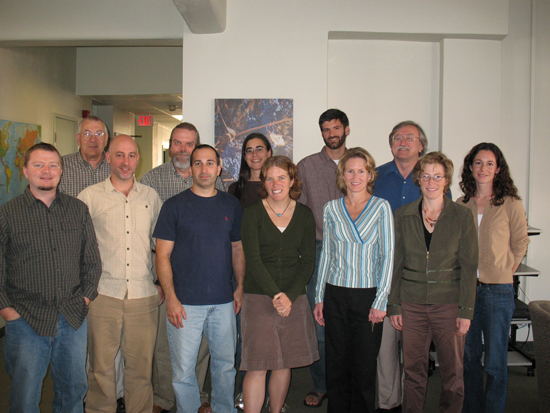NCEAS Working Groups
Mechanistic distribution models: Energetics, fitness, and population dynamics
Project Description
Animals and plants are already shifting their distributions in response to changing climates. Yet, biologists are often unable to predict these shifts because their predictions rely on correlating species' current locations to environmental conditions. Animal and plant distributions often shift in unexpected ways as the species adapt their physiology, interact with other species, and are unable to move to desirable new locations. The working group will synthesize existing models that predict distributions directly from behavior, traits, physiology, and population dynamics. This bottom-up approach will enable the group to extend these models to account for physiological adaptation, species interactions, and dispersal limitations. The resulting models will better predict how species will respond to climate change and how invasive species may spread.

Principal Investigator(s)
Lauren B. Buckley, Michael J. Angilletta, Robert D. Holt, Joshua Tewksbury
Project Dates
Start: November 3, 2007
End: May 26, 2011
completed
Participants
- Amy L. Angert
- University of Arizona
- Michael J. Angilletta
- Indiana State University
- Lauren B. Buckley
- University of California, Santa Barbara
- Brandon Cooper
- Indiana State University
- Lisa Crozier
- NOAA, National Marine Fisheries Service (NMFS)
- Curtis Deutsch
- University of California, Los Angeles
- George W. Gilchrist
- College of William and Mary
- Sarah Gilman
- Claremont Colleges
- Robert D. Holt
- University of Florida
- Timothy H. Keitt
- University of Texas, Austin
- Joel G. Kingsolver
- University of North Carolina, Chapel Hill
- Jason Kolbe
- Indiana University
- Warren P. Porter
- University of Wisconsin, Madison
- Leslie J. Rissler
- University of Alabama
- Naiara Sardinha-Pinto
- University of Texas, Austin
- Michael Sears
- Southern Illinois University
- Joshua Tewksbury
- University of California, Santa Barbara
- Mark C. Urban
- University of Connecticut
Products
-
Journal Article / 2011
Do species traits predict recent shifts at expanding range edges?
-
Journal Article / 2011
Coordinating theoretical and empirical efforts to understand the linkages between organisms and environments
-
Journal Article / 2010
Can mechanism inform species distribution models?
-
Journal Article / 2012
Functional and phylogenetic approaches to forecasting species' responses to climate change
-
Journal Article / 2013
Can terrestrial ectotherms escape the heat of climate change by moving?
-
Journal Article / 2016
Abiotic and biotic constraints across reptile and amphibian ranges
-
Journal Article / 2010
A framework for community interactions under climate change
-
Journal Article / 2009
Bringing the Hutchinsonian niche into the 21st century: Ecological and evolutionary perspectives
-
Journal Article / 2010
Correlative and mechanistic models of species distribution provide congruent forecasts under climate change
-
Journal Article / 2011
The world is not flat: Defining relevant thermal landscapes in the context of climate change
-
Journal Article / 2011
Heating up relations between cold fish: competition modifies responses to climate change
-
Journal Article / 2012
On a collision course: Competition and dispersal differences create no-analogue communities and cause extinctions during climate change
